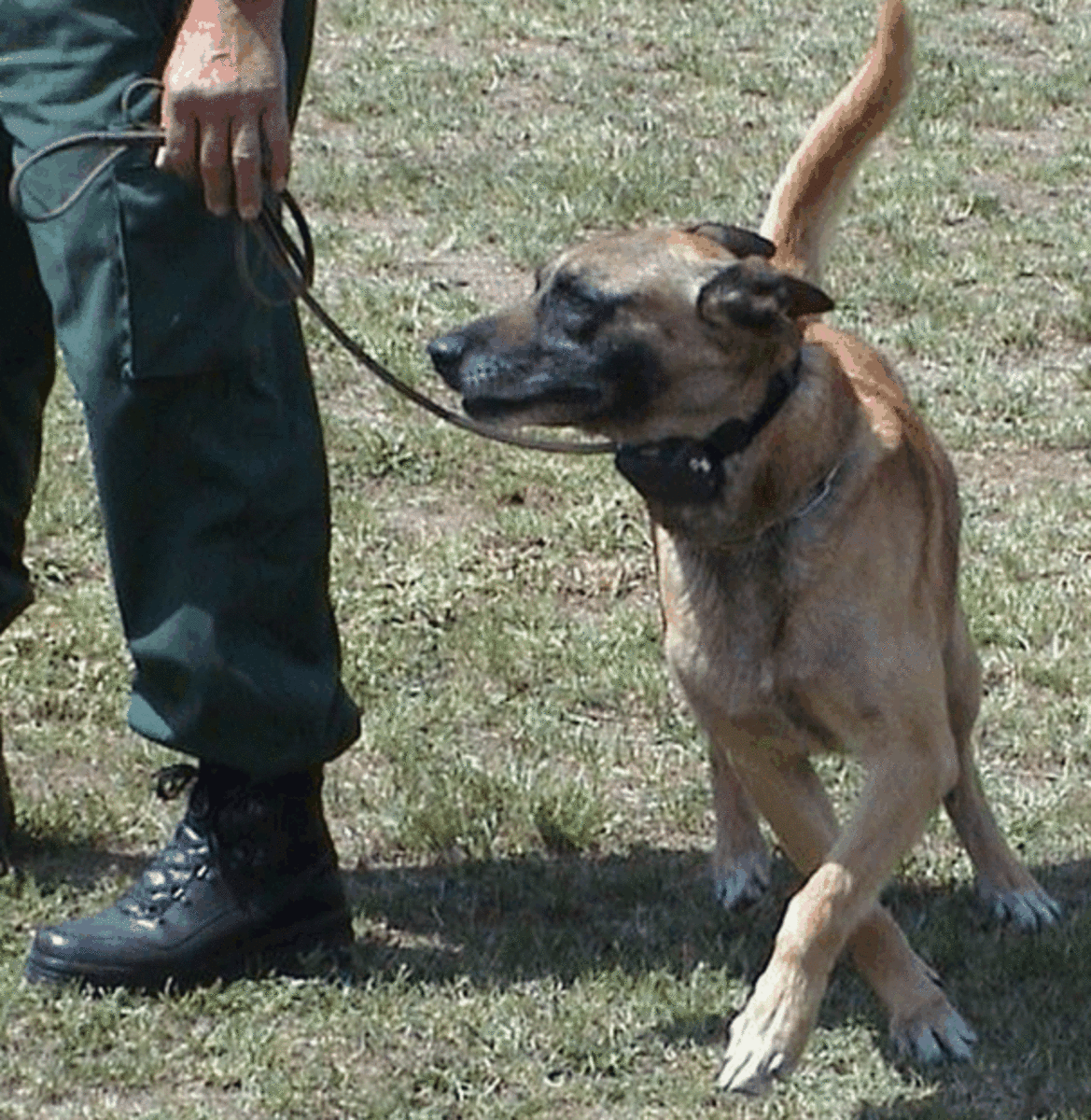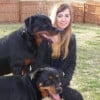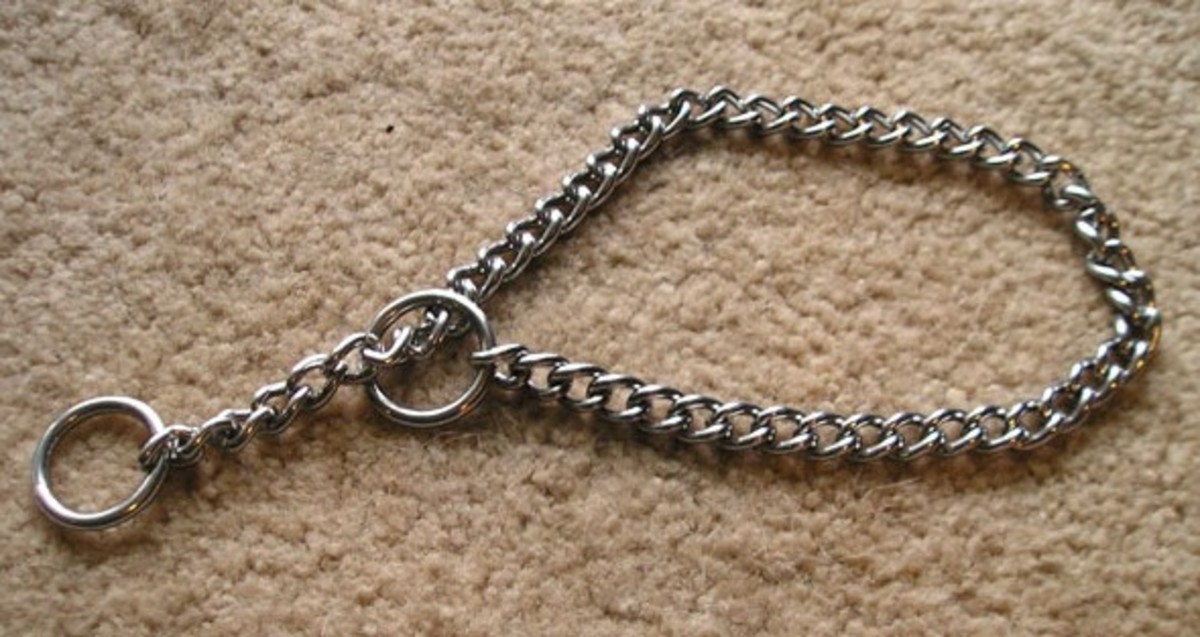How Collars Can Change a Dog's Behavior

Some Thoughts About Dog Collars...
A dog collar may seem like a simple device encircling a dog's neck for control and identification purposes, but there is more than meets the eye. While a collar by itself is obviously incapable of causing harm, the way it's used once the dog wears it can change behavior for the better or for the worst. Knowing how a collar can change Scruffy's behavior will make you a better trainer and Scruffy a better dog.
Collars from a Dog's Perspective
Along with the many things we introduce dogs to, collars are one of those that take some getting used to. If your dog has never worn a collar, you'll likely see his behavior change the first time you put it on. Whether you're collaring a puppy or a rescued dog who has never seen a collar in his life, expect behaviors such as pawing at the collar, shaking the head and rubbing on furniture or carpet to get it off. To make the process smoother, you can work on introducing the collar gradually and associating it with great things such as meal time and high-value treats.
If you've never heard about collar sensitivity, now is a good time to learn about this. This may sound like a new type of allergy, but it's actually a behavioral issue. It stems from repeated collar grabs to the point that Scruffy believes that, upon being grabbed by the collar, pain or some other unpleasant consequence will occur. This issue is widespread; consider that about 20 percent of dog bites occur when a person grabs a dog by the scruff or collar, according to dog trainer and president of Open Paw, Kelly Dunbar. To prevent this form of defensive biting, avoid creating negative associations with being taken by the collar, and teach your pup that the collar and your touching it leads to positive consequences. You may be interested in reading how to get a dog used to a collar and leash.
The product my clients brag about...
There are Collars and Collars: the Good, the Bad the Ugly
Choke collars, prong collars and shock collars may seem to change behavior for the best, but in reality they only suppress behavior rather than work on a dog's underlying emotions. If Scruffy is scared of kids on skateboards and reacts by lunging at them, you may feel compelled to use a shock collar to stop him from engaging in this behavior. Shock after shock, your dog may ultimately stop lunging, but the use of such corrections will do nothing to address the anxiety. Actually, the use of such a deterrent can sabotage the training process by increasing adrenaline and cortisol, creating more stress.
Some collars have the potential of creating deleterious effects on a dog's behavior. Choke collars, prong collars and shock collars cause constriction, pressure and pain along with negative associations. For instance, if you consistently give Scruffy a correction each time he sees children, other dogs and strangers, sooner than later negative associations will form and he'll start pairing them with pain. The risk with using punishment is that there are risks of creating negative associations to something in the environment, the environment itself or even the person handling the dog the moment punishment is delivered, according to Four Paws University.
Head collars may appear to be much more positive training tools than chains, prongs or shock collars. However, for many dogs wearing them, they can be mildly or even greatly unpleasant. Many dogs will turn into a canine version of a bronco, lunging against the leash, pawing at the collar and trying to rub it off. On the other hand, some dogs become very subdued, losing that special spark in their eyes and keeping their tails low. Don't confuse subdued behavior in this case with calmness, explains Pat Miller, trainer and owner of Peaceable Paws, an article for the Whole Dog Journal.
For a change, collars can also change behaviors for the best. Remember: Dog collars are only training tools, and as such, no tools should be a substitute for training. If you invest some time using positive reinforcement training along with force-free behavior modification and avoid using training tools that have the potential to cause pain and fear, then your dog will love wearing his collar and with that he'll also learn to enjoy walks, being around you and all the wonderful sights, smells and sounds that cross your path.
What collars do I recommend clients? Just regular buckle collars, harnesses and front-attachment harnesses. As a force-free trainer I do not allow choke, prongs or shock collars in my classes. The dogs respond beautifully to my techniques because they are based on positive reinforcement training. In my classes, my ultimate goal is to have dog owners no longer relying a leash. Yes, the leash is there to abide to local laws, but it's almost as if wasn't there because the dog has learned to walk on a loose leash. If you are interested in learning more about loose-leash walking, read my hub: The best leashes and techniques to train a strong dog to walk on a leash.
Alexadry© All rights reserved, do not copy.
For further reading
- How to Stop a Dog From Excitedly Lunging Towards Oth...
Learning effective strategies to stop that annoying lunging towards other dogs. Tools, training techniques from a certified dog trainer. - Dog Training: Pros and Cons of Using a Dog Halti
When should you use a dog halti and what are the main advantages and disadvantages? Learn what this training tool can do for you and your dog. - The Dangers of Using Retractable Dog Leashes
adry At a first glance, a retractable dog leash looks like a great tool for dog owners willing to give their dogs a glimpse of freedom while still being able to have a certain amount of control. Indeed a retractable leash consists of a plastic... - Dog Behavior: Why is My Dog Scared of Going Outside?
Why is my dog scared of going outside? There may be several reasons. Following are several exercises to hopefully help your dog enjoy the yard again.






